People: picking cherries with Camille
She's a chef, she's from Paris, she loves cinema, and she loves being in the country to pick cherries at the exact moment they're ready
It’s a warm early-June afternoon, June 7 actually, and cherries are on Camille’s mind. It’s the time. She’d gotten a tip on a tree heavy with the fruit from Simon, the man behind the farm Les Trois Parcelles — the farm that rules what’s on the menu each week at Aux Bons Vivres. We jump on our bikes and not more than two minutes later, we jump off as Camille spies a tree dressed in the juicy fruit. We reach and pluck. We pop one in our mouth for every one we pop in the box.
Camille was born in Paris, and it’s where she’s spent her life, with a few stints on farms around France, and some time cooking in Italy. It’s where she went to culinary school, and it’s where she’s spent most of her time in kitchens. For the first time, she’s left the city, and is spending the summer in the countryside as the resident chef for the season at Aux Bons Vivres — a restaurant-association in the French countryside, an hour and a half south of Paris, in a village called Yèvre le Châtel, with not many more than 200 residents. It’s a village popular amongst Parisians for country homes, it’s a village part of the Les Plus Beaux Villages de France — the most beautiful villages of France, it’s a village with history going back to the early 13th century.
But this isn’t about Yèvre le Châtel, nor is it about Aux Bons Vivres — words on this special place, and Anne-Claire Heraud, the woman who started it all, to come — this is about Camille, and it’s about cherries.
Back to June 7, Back on bikes, through fields of colza plants waiting to be turned into canola oil, and fields of wheat, waiting for the July moissan — the harvesting of the wheat, one of the, if not the, biggest weeks in the calendar for farms here. Simon zips passed us in his car as we sway across the long winding roads on our bikes and we follow him to the old donkey stables he’s bought to turn into the farm’s flour mill, moulin, and eventually bakery, to supply bread and flour to Paris and the nearby villages. I begin to get an understanding of what goes into producing a bag of flour, something we buy, reach for, pour from without much thought. Another story, another time.
There’s a group of us working at Aux Bons Vivres for stints over the summer. We sit around tables and talk; about what it means to leave a city life for a country life; about relationships that tie you to one person and the space, or maybe lack of, for individual freedom and pleasure within that; about working under the hierarchal, Escoffier-style brigade system in kitchens; about a life working in food when we’re at the forefront of a climate crisis; about the ratio of mustard to yolk in a mayonnaise; about love; about terrines; about cherries.

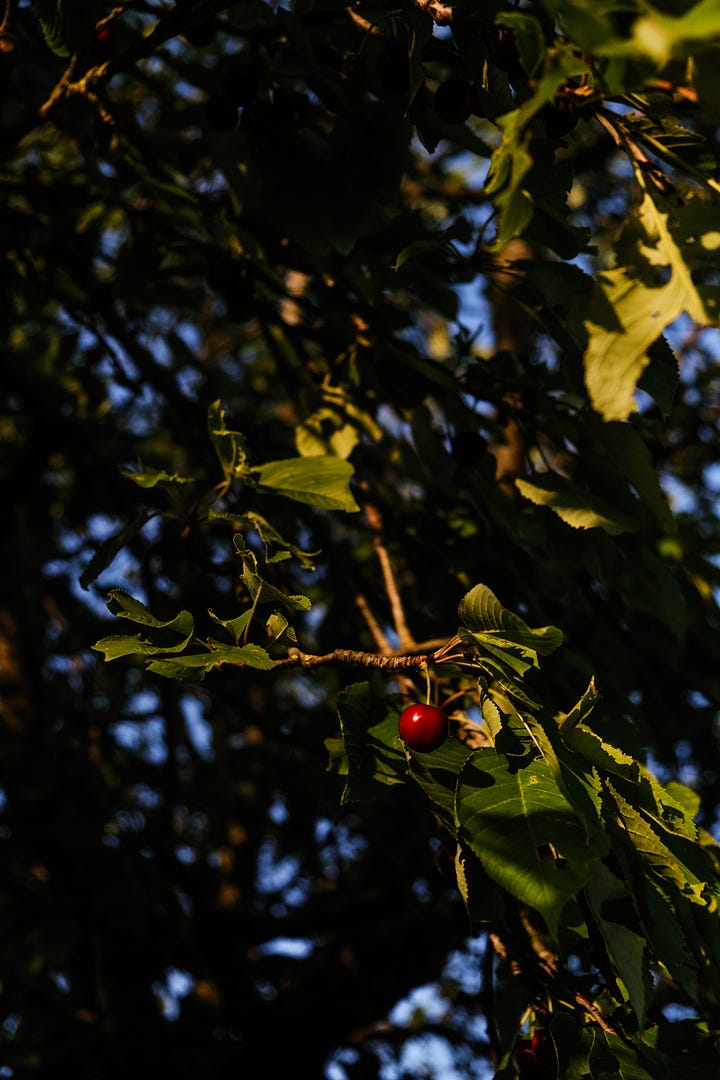
Someone says they feel living in Paris, they feel disconnected from the land, from the seasons, from where and how food is grown, and it’s what has bought them out to this countryside village. But for Camille, she says she doesn’t feel this — working in a kitchen in Paris, for her means days spent fondling, washing, slicing, dicing produce, and it’s thanks to this that she maintains a strong connection to the land, to the seasons, through this constant interaction with what’s growing just outside of the city. If she wasn’t working with food so intimately, she would lose this connection instantly. It’s a thought that sticks with me.
Over the season at Aux Bons Vivres, Camille spends long Thursdays to Sundays cooking and preparing the menu, then wakes early on Monday mornings for her weekly day on the farm, Les Trois Parcelles. She helps the team, usually made up of about six to ten people, depending on the time of the year. Perhaps she’s out in the fields, planting leeks, or weeding them; perhaps she’s under the tunnels, cleaning up the tomato plants or harvesting them. She speaks of how important it has become to her week’s flow to spend time on the farm, to understand the produce she’s working with, to understand what goes into producing it all, and to spend time with the people who spend their days growing it.
Back to June 7, And finally, on this warm June night, we make it to The Tree. Again, we reach, we pluck, we snack as we chat, as we climb. Like children. The sun starts to go down as we’re up the tree, its golden light drenching the wheat fields below and lighting up the dangling cherries in the branches above.
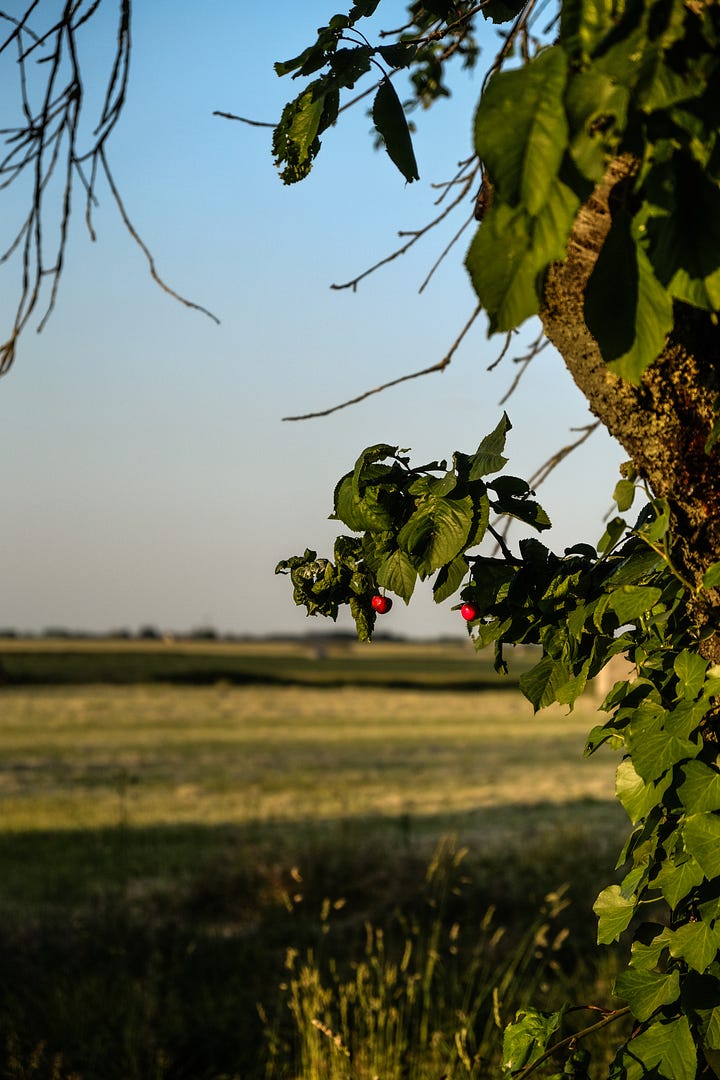
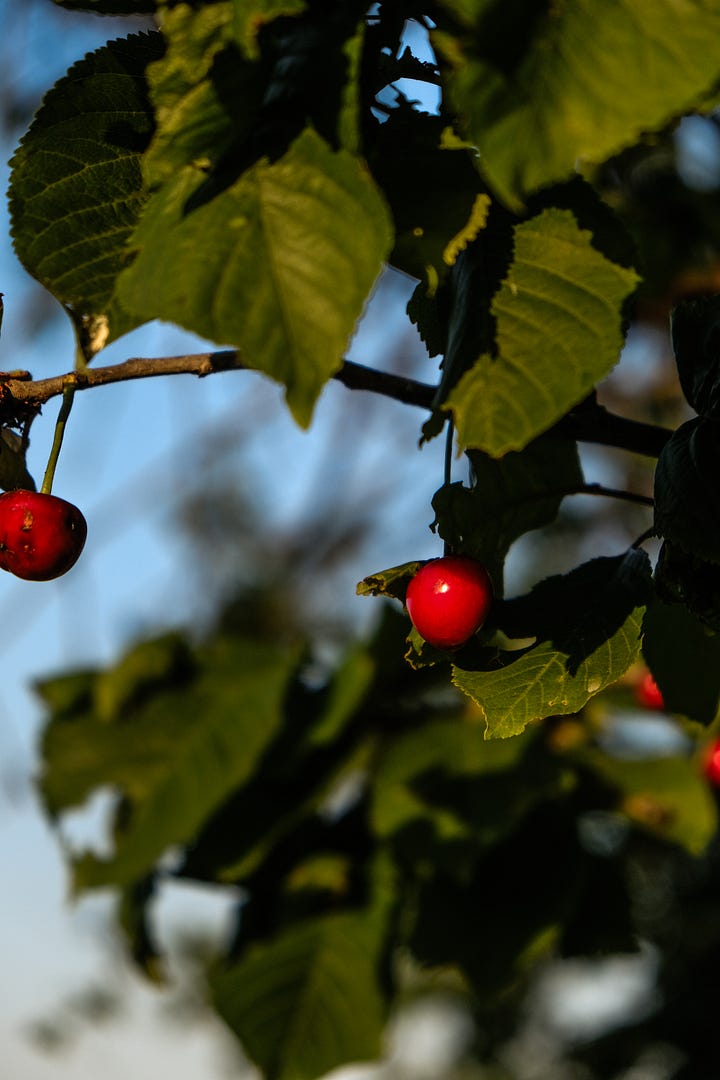
We talk about what cherries symbolise for us. For Camille, it’s long summer days, it’s clafoutis. For me, it’s Christmas, it’s my grandmother buying a big box from the stands on the side of the road in south-east Queensland — they’ll land in a big bowl back at her countryside home for us all to pick from over the long and lazy Christmas days spent at the farm.
We talk about cherry games. For Camille, the cherry game is dangling a pair of cherries that are still joined at the top over your ear. Just like this (PS., do eat here if in Paris). For me, the game is trying to use your tongue to tie a knot with the cherry stem — who can do it the fastest.

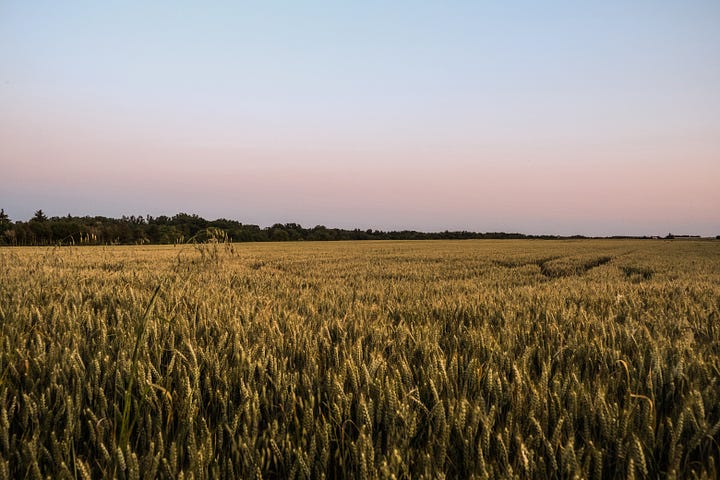
The sun sets over the drying wheat fields as we bike home, back to the village. Waffles for dinner with leftover batter from service. It’s already warm when I wake the next morning, and I find Camille in the kitchen, carefully washing the tender cherries, and plucking the stems from each. She’s making clafoutis. I’ll always remember my first clafoutis, at the end of my first meal at Paris bistro, Le Baratin. And I’ll always remember the pits being left in the cherries, feeling like it being a symbol of the French’s quiet confidence, that they’re not going to bow down to their diners, that they have better things to do than pit cherries for hours. Some cooks would argue that the pits add flavour, so I suppose there’s that.
On cherry pits, chef Michel Bras writes,
Did you know that in Switzerland, cherry pits used to be washed and sun-dried? The Swiss would fill small cushions with them. Today, you can warm this cushion in your microwave and use it as a relaxing tool. The pits will retain the heat for about half-an-hour, bringing a soothing effect to your neck or ankles. Several hours in the freezer will turn it into an ice pack too. Don’t throw away your cherry pits.
and food writer Faye Levy, in a piece for The Washington Post in 1982, To Pit or Not to Pit: A Cherry Jubilee, writes,
Cherries present an obstacle that discourages many cooks: Removing their pits is not only time-consuming, it’s difficult to do without mashing the fruit, losing the precious juice and getting stained fingers. Cherry pitters (which often double as olive pitters) save some time but don't really solve the problems of bruised fruit and lost juice. Resourceful cooks in cherry-rich France, Italy and Eastern Europe have come up with a smart and simple solution: They leave the pits in.
When Camille is cooking something like this, something classic and something traditional, she’ll look at a few recipes, taking something from each. The main recipe she lands with for the clafoutis on this particular morning is by French pastry master, Christophe Felder. It’s custardy, it’s not too sweet, and Camille ramps up the ratio of cherries to batter, which is something I will do with all future clafoutis. We come to learn that it’s delicious hot and fresh, but agree that it’s better the next day, served in cold squares. One large round clafoutis for us, and one larger for the people of the farm. Camille delivers it hot during their break for lunch.
Le clafoutis aux cerises (de Christophe Felder)
A few clafoutis tips from chef Christophe:
make the batter in advance and set it aside in your fridge (the day before if possible)
mix the batter well
cook the clafoutis in two goes
do not remove the pits, they give a better taste
INGREDIENTS
4 large eggs
110 g all-purpose flour
1 pinch salt flakes
90 g white sugar
1 teaspoon vanilla essence, or seeds from half a vanilla pod
1 tablespoon Kirsch (cherry brandy) or rum (optional)
150 g milk
500 g liquid cream
400-500 g cherries with stone
METHOD
Preheat your oven to 210C
In a large bowl, combine the eggs, flour, salt, sugar and vanilla, and whisk for 5 minutes
Add the brandy and mix to combine, then pour in the milk and cream, whisking again for another few minutes
Pour some of the batter into your ceramic gratin dish (about 25 cm in length) so it’s about 1 cm deep and cook for 15 minutes, and set the rest of the batter aside in the fridge
Remove the dish from the oven and let it cool before pouring another 1 cm of the batter into the dish, then place the cherries into the dish in an even layer and cover with the remainder of the batter
Return the dish the oven and cook for another 20 minutes, until golden
I also love a prune clafoutis in the fall, when cherries aren’t around, cooking it in the same way but perhaps soaking the prunes in Armagnac for a few hours first. A perfect winter dessert to eat by the fire, maybe alongside a whisky or a lover, or both.


Over the next few weeks, while cherries are still on the trees, getting deeper in colour, and sweeter in flavour from more time under the sun, I spend late afternoons sucking on the fruit and their pits from my room, drenched in the afternoon light that pours in through the large, tall windows as I read, as I write.
Over the next few weeks, we play with cherries for the menu, and Camille talks about the deep-red fruit. She talks about the song Les temps des cerises — the time of the cherries. A song written in France in the 1800s reflecting a time of change, revolution and upheaval in the country — “the time of the cherries” symbolising a time of innocence and joy in contrast with a time of tension and struggle. “It’s beautiful,” Camille tells me.
She talks about a poem on cherries that Michel Bras wrote, in one his cookbooks that Camille has in a box back in Paris. We haven’t yet been able to find the book, nor the poem, but the thought alone, of a world-class chef writing a poem on cherries, is warming and sweet. He has a wonderful clafoutis recipe, too. In lieu of Michel Bras words on cherries, here are some Tom Robbins on the red fruit that I recently came across,
“Under an orchard tree, dropping with cherries, cowgirls lay in the shade. They fed each other fruit. Dark juice dribbled into dimples. Cherry meat stained smiles and nostrils.” — Tom Robbins, Even Cowgirls Get the Blues
Over the next few weeks, Simon pops his head into the restaurant as we’re cooking. He’s come straight from the farm, covered in dirt, and he clutches a branch nearly as tall as him. It’s from a cherry tree, and it’s dripping in the fruit. He plonks it down on the long wooden table, and we all come and go, leaving the bowls we’re mixing from, the boards we’re chopping from to pick, pluck and suck.
Cherry season, it’s something special. For the sweet and juicy fruit, for its promise and confirmation of summer, for the reminder of the utter pleasure and value in simplicity — a bike ride, a tree climb, a summer night that is still light and warm at 9.37pm.
I look back through my red leather notebook and under the date June 7, have scribbled,
— It all just felt like pure freedom.
lessons and reminders from Camille,
she teaches me French, sayings like ‘avec la maryse, j'économise’ — with the spatula, I save, or on hearing about a new lover in the south, ‘un dans chaque port’ — one in each port
she teaches me the difference between using a craquelin — a thin, simple sugar-butter biscuit that gets perched on top of the piped choux dough before it goes in the oven, and as the name suggests, it gives the choux a crackly texture, and makes for a much more even, more round, finished choux
she also teaches me how to make a perfect choux, a life skill that I dream of using to make my grandmother a croquembouche made up of 90 choux for a belated 90th birthday cake
after a wet and hot summer week, we get a batch of strawberries that aren’t so beautiful, having been pummelled by the rain then the heat, and Camille reminds us, — “well that’s our job in the kitchen, to turn the farm’s work into something delicious, that we must let the produce and the state it is in determine what we’re going to do with it, so these strawberries, let’s do an ice-cream”
she teaches me that whenever you’re mixing/whisking for a long time, start with the movement in your wrist, when that tires, move the movement up to your elbow, and eventually to your shoulder, then back down again to your wrist and start over — mayonnaise, choux, it really does help to endure
she teaches me to think about the “critical points” of recipes or dishes, because everything you make has at least one — a moment in the preparation that requires a little more attention, a little more thought, that will make all the difference
A few more Camille recipes to hang onto, to carry from kitchen to kitchen,
A simple mayonnaise to serve with eggs, to have on a sandwich, to serve with roasted vegetables, to pop next to a bowl of boiled prawns waiting to peeled and dipped:
To a medium-sized mixing bowl, add one egg yolk, a spoon of equal size to the yolk of mustard, a splash of vinegar (red wine or apple cider), a good pinch of salt, a good crack of pepper. Give that a little whisk to combine then, as you continue to whisk, slowly start pouring in 1 cup of a neutral oil (we use the farm’s canola oil or sunflower oil), a few drops at a time at first, then increase to a light but steady stream, whisking in the same motion as you go. You’ll notice the mixture start to emulsify. Continue this until all the oil is combined into the mayonnaise. Taste for seasoning and adjust with salt, pepper and vinegar.
A simple strawberry ice-cream, glace à la fraise
In a pot, add 100 g honey per 1 kg of hulled strawberries. Bring this to boil, then let simmer and breakdown for about 20 minutes. Put the mixture into a Vitamix and blitz for a good few minutes. Refrigerate the blended strawberries until completely cool, perhaps even overnight. Add this mixture to your ice-cream machine and leave to mix for as long as needed for your machine, ours takes one hour, and voilà, a simple glace à la fraise.
Madelines for goûter — afternoon tea
Brown 380 g butter in a saucepan
Combine 6 eggs and 250 g white sugar with whisk
To the egg mixture, add in 380 g all-purpose flour and 24 g baking powder
Add in the zest of 1 lemon, 114 g milk, 60 g honey
Mix the butter and put mixture in the fridge to cool completely
Bush madeleine tray with some melted butter and put in fridge to cool for 5-10 minutes
Add 22 g batter into each madeleine mould on the tray
Cook for 8 minutes at 180C
(freeze leftover batter for another day, another goûter)
And few other Camille things,
Favourite cinemas in Paris:
Le Louxor, 10th arrondissement
Le Champo, 5th arrondissement
L’Arlequin, 6th arrondissement
Go-to knife sharpening shop in Paris:
Atelier DOMA, Gare de Lyon
Name: Camille Styczynski
Place: Paris, France
Merci, to Camille, for the sweetness, for the fun, for the lessons — in food, language and life,
And merci to you, dear reader, for landing here,
H. X





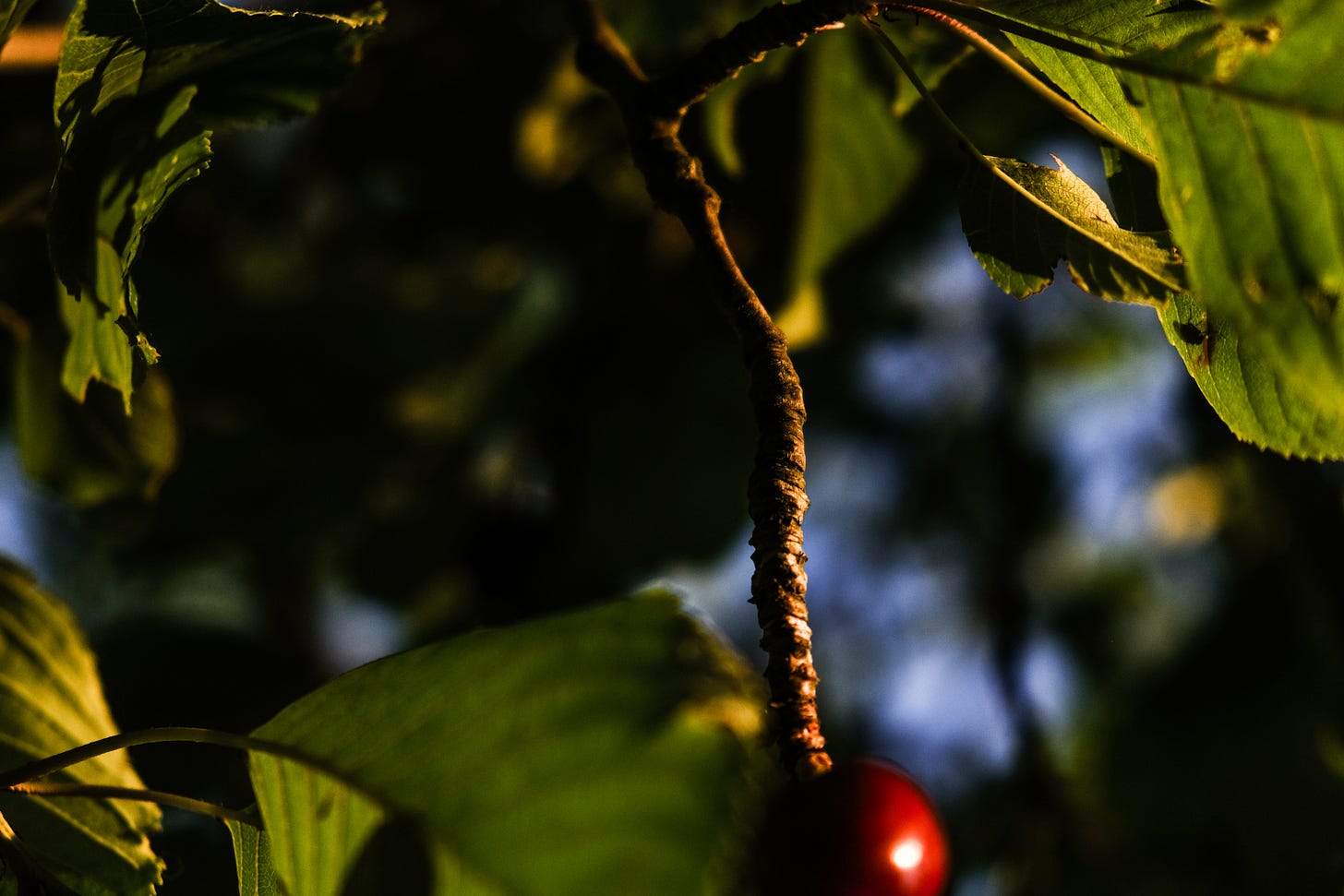



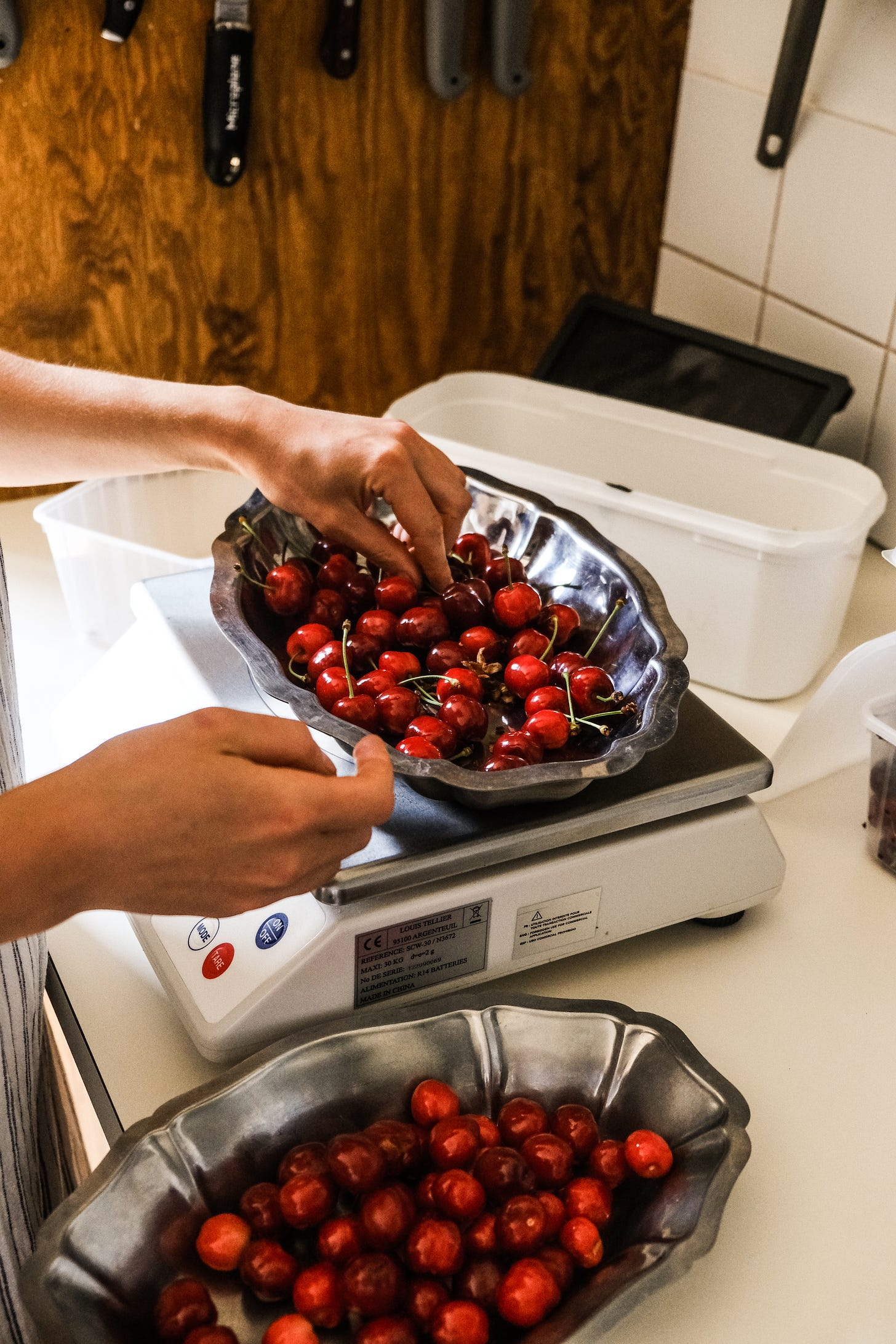


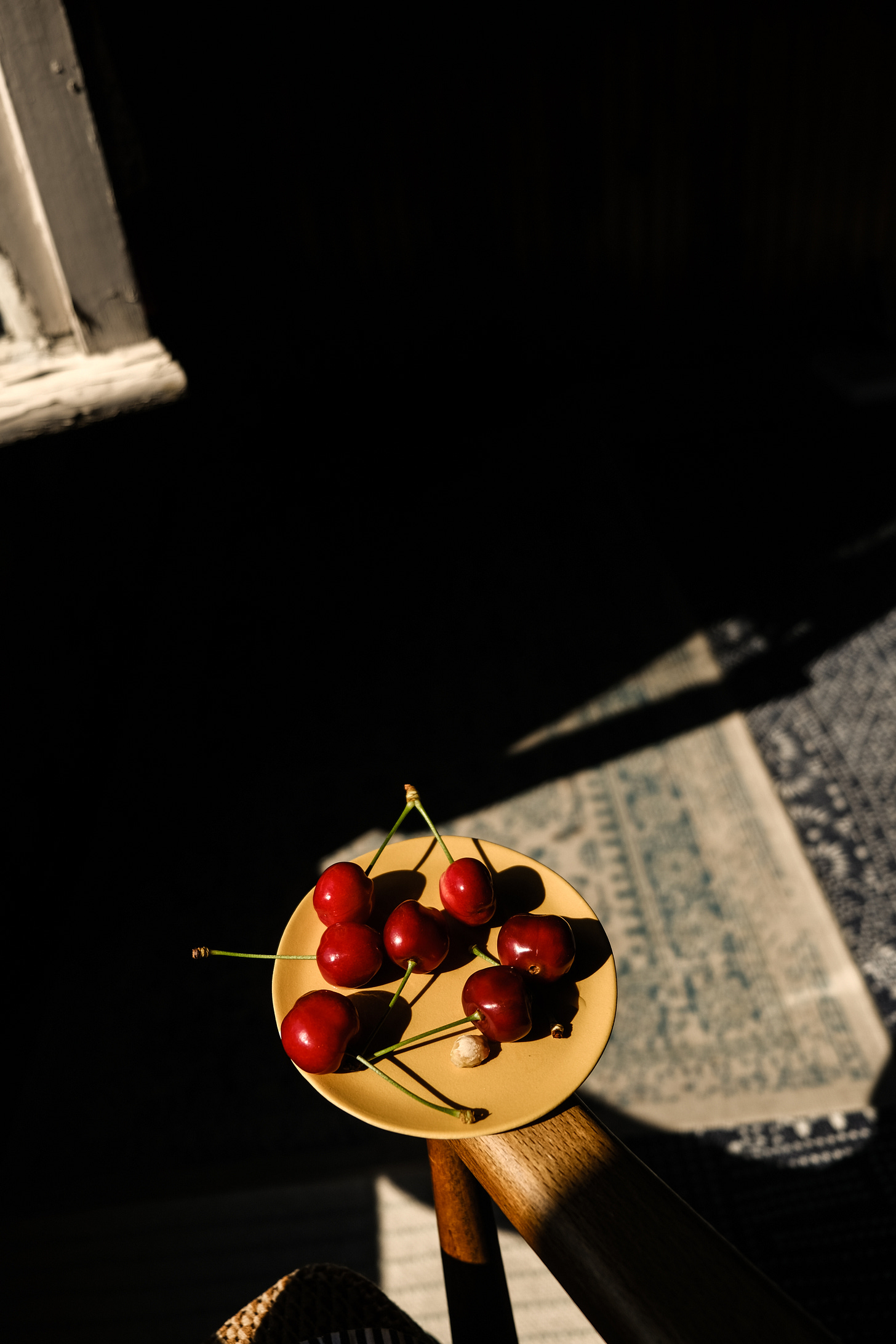



So many highlights here, too many to list. I will make your prune clafoutis this winter without doubt.
Yummy yum yum yum yum. This makes me excited about summer and cherries and all the other delicousness to come x